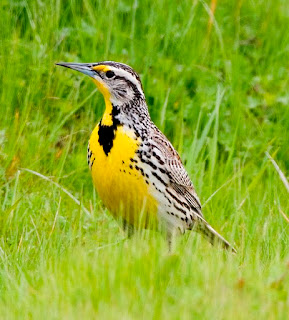Most serious birders keep a life list of the species seen, possibly including the location, the weather, the time of day, and what the bird was doing when spotted. As such things go, my life list is modest ~ 350 species positively identified in habitats including desert, swamp, seashore, open ocean, prairie, mountains, rain forest, and urban habitats. The threshold which seems to mark a serious (i.e. obsessive) pro is 700 species, and there are those with the means to travel the world in order to "collect" several thousand species.
Each time I've moved to a new part of the country, I've taken a class led by a local birding expert, including guided field trips. It's a great way to meet like-minded people, and to see habitat and birds you might otherwise have missed. I also had the good fortune to serve as caretaker for a Nature Conservancy preserve in southern Arizona for four years ~ a relict upland marsh whose spring-fed, year-round stream is a magnet for migratory birds. And you can be certain that my studies in Ecology & Evolutionary Biology at the University of Arizona included a class in ornithology, which included the most excellent field trips of all.
One of the best ways to get started is to join a local chapter of the National Audubon Society. There willing enthusiasts will share their knowledge not only of birds and local habitat, but also the optics they find most useful ~ binoculars and spotting scopes ~ as well as tips on what to wear, and what other wildlife might be seen.
Sadly, as is true with other wildlife, our native birds are under siege by loss of habitat, loss of food supply, changing climate, poisoning from toxic industrial and agricultural chemicals, and sometimes over-hunting. The higher you are on the food chain, the more vulnerable you are to these pressures ~ and as you might expect if you're a regular reader, avian predators are most at risk. All nature's creatures need our protection ~ for their sake and for our own.
Here is a small sampling of some of my favorite images of birds. Click on any image to enlarge. Enjoy.
Bald Eagle courtship flight
unidentified Kingfisher diving
Burrowing Owl chicks
Tree Swallows in snow
Great Blue Heron take-off
albino Hummingbird
Sandhill Cranes on take-off



















No comments:
Post a Comment